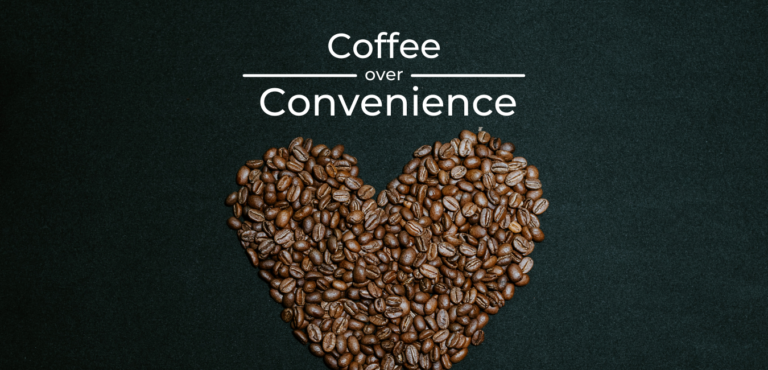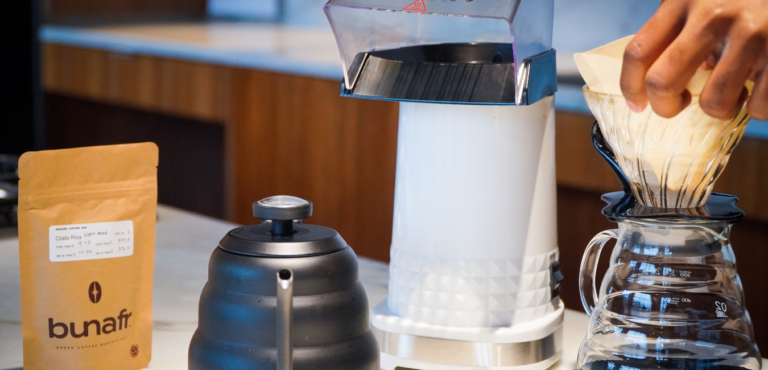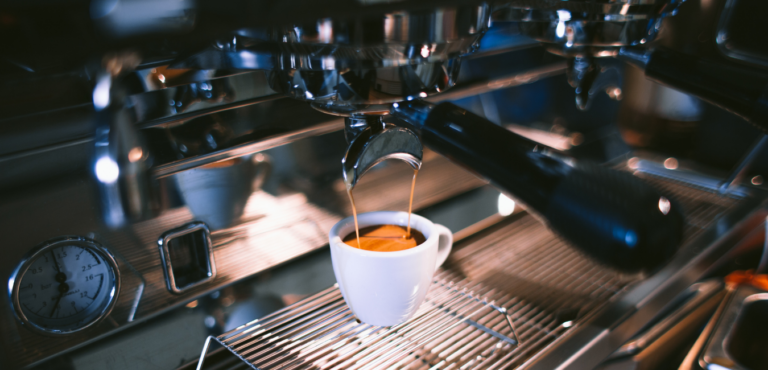Guide To The Perfect Pour Over
There are few things in life that need absolute precision. Rocket science, surgery, and juggling to name a few. Pour over coffee too benefits from a good deal of the same. However, there isn’t just one precise measurement for the perfect cup. People being as different as they are, have different palates, and are unique in their preferences. The process of making a filter brew is involved and often tends to bring peace. Like entering a meditative state with a singular focus. A brief period with no flashing lights, no power chords, and a state of mind that’s devoid of all distractions.
The path to discovering your ideal coffee starts with just one cup of joe. It’s a matter of minor tweaks till you move closer to the perfect cup one step at a time. At Bunafr, we care about the coffee, and we want you to experience specialty coffee. Here’s a great guide to get your foot in the door.
Pour Over: What you need?





Filter
Brewing Device
Carafe
Freshly Ground Coffee
Pouring Kettle
1
Grind the coffee right before you start brewing. The size of the grind heavily depends on the amount of coffee. Fine ground brown for one or two cups, and a relatively coarse grind to brew more. A handy guide would be a coarse grind (Baratza-13) for Chemex and a fine grind (Baratza-11) for Hario drip.
2
As for the ratio, 26g of ground coffee per cup (12oz) with 360g of water for a Chemex, and 27g per cup (12oz) with 380g of water for a Hario drip would do great. But we always recommend that you experiment and get a feel for your preferred strength and flavors.

3
After boiling some water (preferably with low minerality), pour a small amount on the filter to get rid of any undesirable paper flavor and to warm up the brewing apparatus. Add coffee to the brewer and place the brewer upon a large cup. Discard the paper water.
(Filters: There are a few ways to go with filters with paper being the most common and easiest to manage. Fine mesh metal filters can keep coarsely ground coffee at bay while letting the finer grounds pass through. It makes for a cup with plenty of texture. Cloth filters create a similar product to that of a paper filter. The difference lies in maintenance and storage. Cloth filters need attention, they need to be cleaned soon after the brew is completed.)
4
Place the assembled apparatus on a weighing scale, and add some boiling water to the ground coffee. Enough to hydrate all the coffee. This is when the coffee blooms. It’s usually about twice the amount of water as coffee, but there’s no strong reason for accuracy.
(Bloom: The process of adding some water to the ground coffee to release some of the trapped CO2. The coffee swells and bubbles as the CO2 escapes and once it’s done, more warm water can be added to continue the brew.)

5
Stir the coffee gently to make sure the coffee is evenly distributed and fully hydrated to make sure there aren’t any dry zones.
6
After about half a minute, stream in the rest of the boiling water. To avoid adding more than required, it’s recommended that you stay away from pouring water on the walls of the brewer. Doing so causes the added liquid to stream along the incline without much interaction with the coffee grounds. Without contact, coffee isn’t extracted and it’s conceivable to end up with a weak, watered-down cup.
7
Once the water level is just short of an inch below the top of the cone, stop pouring. Once again, give the mix a gentle stir to unstick coffee grounds from the walls of the filter.

8
Let the warm water do its thing. The extracted coffee accumulates at the bottom after dripping through the filter. Once the bed of coffee looks dry, the coffee is ready.
9
Compost the used ground coffee or use it in your garden. It’s a great source of nutrition for your plants. Discard the filter if it’s paper and if it’s a metal/cloth filter, wash it right away. Remove the brewer and pour yourself some delectable coffee.
If the resulting brew isn’t entirely to your liking, give thought to the reasons behind it. Changing the bean, grind, roast, and amount or temperature of the water could influence the flavor and bring about unique characteristics that are faithful to each preparation. This helps you understand what your perfect cup means while the path forward is made clearer with each new attempt. Here’s a guide to all the brew methods. At Bunafr, where coffee personalization is the goal, we encourage you to set out on a coffee adventure by roasting your coffee beans at home & we’re here to help you along the way. This journey is filled with discovery, desire, and determination. It’s upon you to unfurl the sails and take off.









